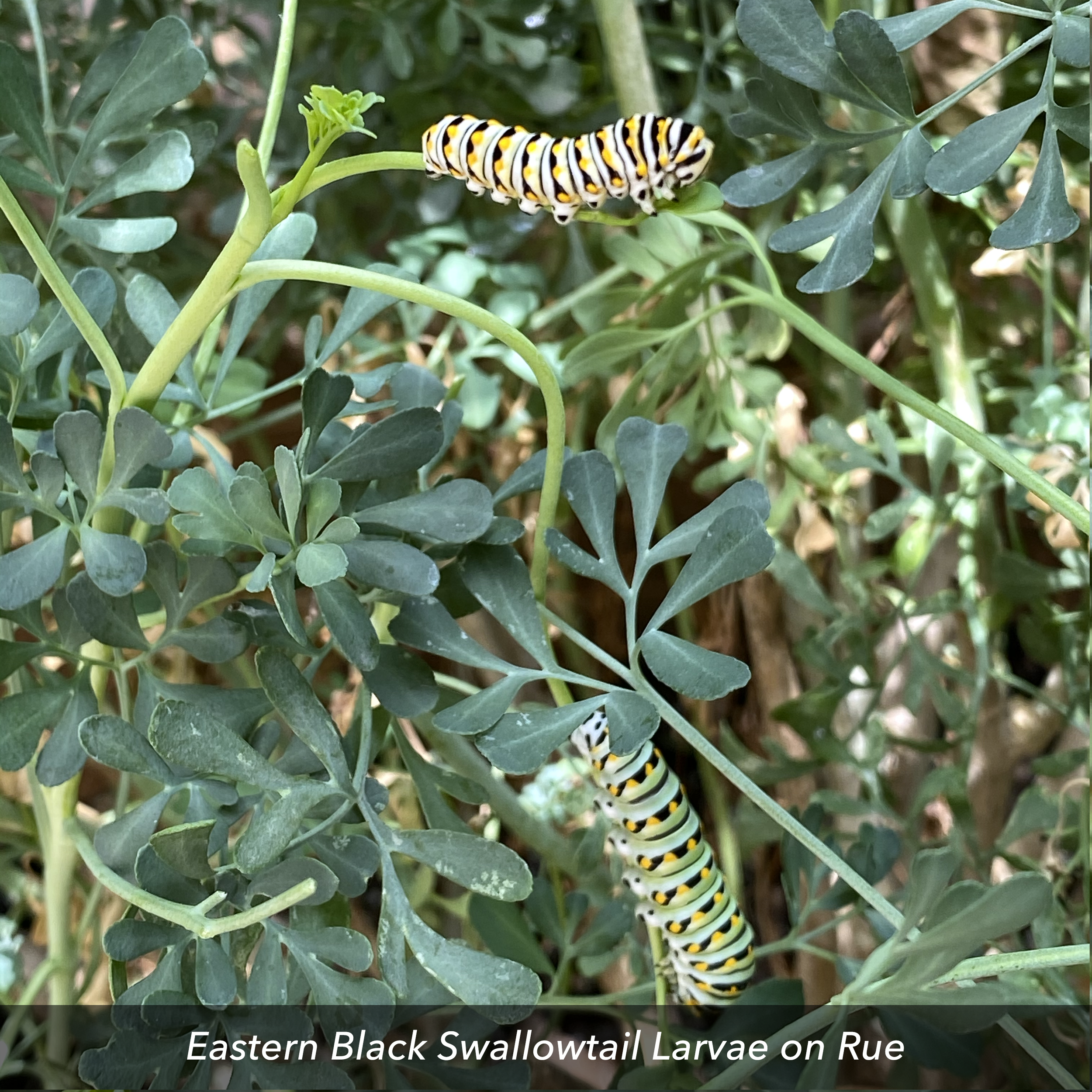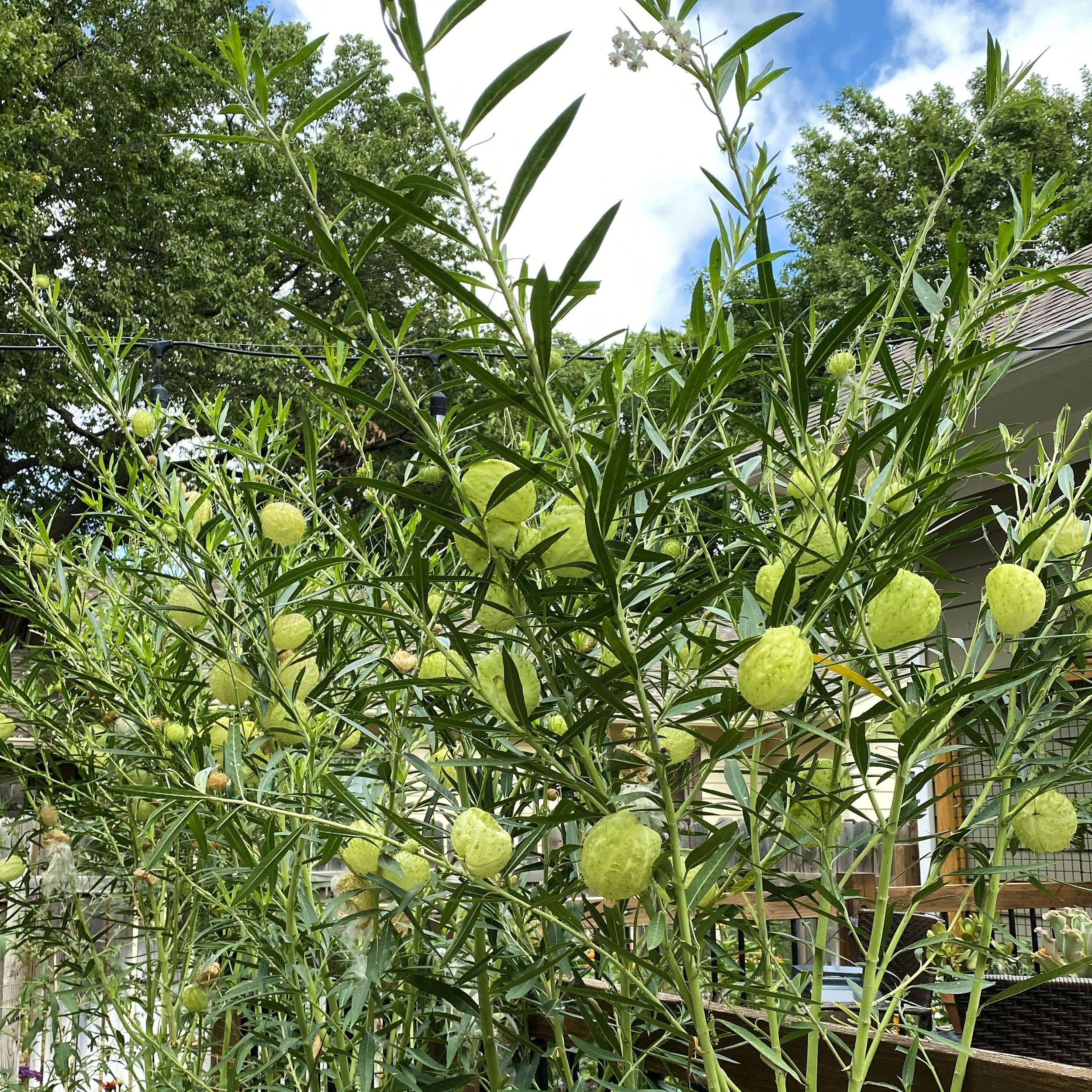 Image 1 of 5
Image 1 of 5

 Image 2 of 5
Image 2 of 5

 Image 3 of 5
Image 3 of 5

 Image 4 of 5
Image 4 of 5

 Image 5 of 5
Image 5 of 5






Common Rue
SIZE 4" Pot
Common Rue (Ruta graveolens), also known as Herb-of-Grace, is an incredible host plant for both the Giant Swallowtail and the Eastern Black Swallowtail. Few plants attract multiple species of egg-laying butterflies, making this plant a butterfly garden superstar. Common rue is a highly valued herb, planted especially for its bluish leaves and tolerance of hot, dry soil. We plant ours next to orange sun-coleus cultivars (such as 'Freckles') for a stunning foliar display.
HARDINESS ZONES | 5 - 9, mulch in winter for northern zones
MATURE HEIGHT | 2-3ft
SPREAD | 1-2ft
SUN | Full sun, but can grow in part shade
SOIL | Light to medium, moist well-draining soil
WATER | Dry to Medium
FLOWERING TIME | May, June, July
LARVAL HOST | Giant Swallowtail (Papilio cresphontes); Eastern Black Swallowtails (Papilio polyxenes asterias)
Rue may look like other herbaceous perennials, however it behaves more like a small shrub. Although beautiful as a single specimen, rue can also be planted as an informal hedge to bring a bit of structure to your garden layout. Rue has a sweet aromatic scent that is difficult to describe. Around mid-summer the plant will send out a mass of small yellow flowers.
Some care must be taken when handling this plant. When removing plant material, such as when deadheading or pruning, we recommend wearing gloves. The oils of this plant in combination with UV light from the sun may cause a severe skin irritation (called phytophotodermatitis) for some people.
Common Rue is native to southeastern Europe, originally utilized in ancient Roman cuisine. It is now grown in gardens throughout the world.
PLANT SIZE: 4" NURSERY POTS (3.5in square x 4in deep)
NOTE: To reiterate, we highly recommend wearing gloves when handling this plant. The severity of phytophotodermatitis can range from mild irritation to inflammation with large raised blisters. Most people do not have a reaction to this plant, but such a reaction can occur. This reaction is not immediate. It can begin to occur 24-48hrs later. For most people, this is a safe plant.
CREDITS: Image 3: "Giant Swallowtail (Papilio cresphontes) in my garden ovipositing eggs" by Adam J Skowronski is licensed under CC BY-ND 2.0, Cropped & Captioned
SIZE 4" Pot
Common Rue (Ruta graveolens), also known as Herb-of-Grace, is an incredible host plant for both the Giant Swallowtail and the Eastern Black Swallowtail. Few plants attract multiple species of egg-laying butterflies, making this plant a butterfly garden superstar. Common rue is a highly valued herb, planted especially for its bluish leaves and tolerance of hot, dry soil. We plant ours next to orange sun-coleus cultivars (such as 'Freckles') for a stunning foliar display.
HARDINESS ZONES | 5 - 9, mulch in winter for northern zones
MATURE HEIGHT | 2-3ft
SPREAD | 1-2ft
SUN | Full sun, but can grow in part shade
SOIL | Light to medium, moist well-draining soil
WATER | Dry to Medium
FLOWERING TIME | May, June, July
LARVAL HOST | Giant Swallowtail (Papilio cresphontes); Eastern Black Swallowtails (Papilio polyxenes asterias)
Rue may look like other herbaceous perennials, however it behaves more like a small shrub. Although beautiful as a single specimen, rue can also be planted as an informal hedge to bring a bit of structure to your garden layout. Rue has a sweet aromatic scent that is difficult to describe. Around mid-summer the plant will send out a mass of small yellow flowers.
Some care must be taken when handling this plant. When removing plant material, such as when deadheading or pruning, we recommend wearing gloves. The oils of this plant in combination with UV light from the sun may cause a severe skin irritation (called phytophotodermatitis) for some people.
Common Rue is native to southeastern Europe, originally utilized in ancient Roman cuisine. It is now grown in gardens throughout the world.
PLANT SIZE: 4" NURSERY POTS (3.5in square x 4in deep)
NOTE: To reiterate, we highly recommend wearing gloves when handling this plant. The severity of phytophotodermatitis can range from mild irritation to inflammation with large raised blisters. Most people do not have a reaction to this plant, but such a reaction can occur. This reaction is not immediate. It can begin to occur 24-48hrs later. For most people, this is a safe plant.
CREDITS: Image 3: "Giant Swallowtail (Papilio cresphontes) in my garden ovipositing eggs" by Adam J Skowronski is licensed under CC BY-ND 2.0, Cropped & Captioned


















